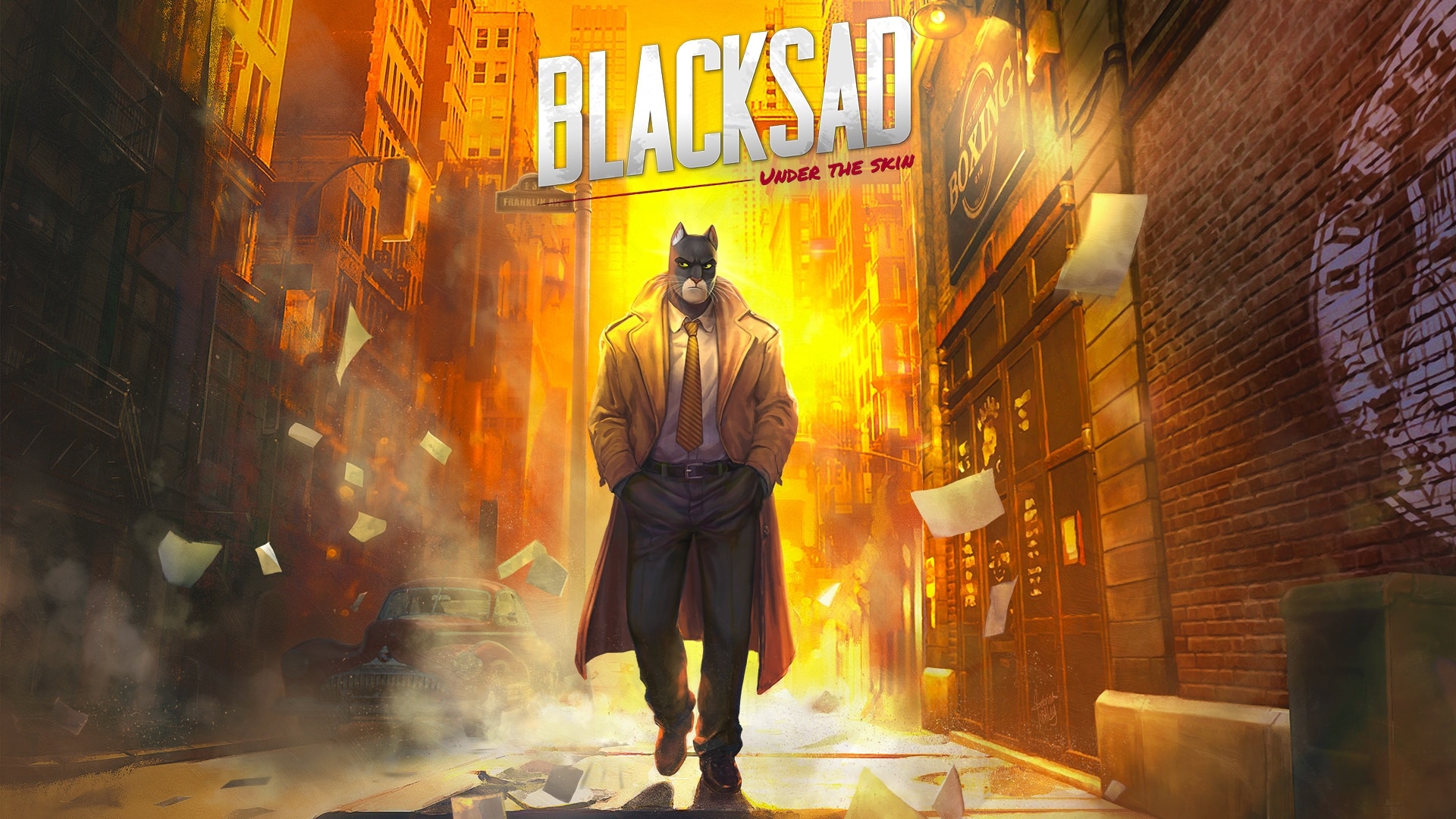
Noir Ambitions Hampered by Technical Issues
Blacksad: Under The Skin is a noir detective adventure game based on the popular comic book series by Juan Díaz Canales and Juanjo Guarnido. Set in the 1950s New York, the story follows private investigator John Blacksad, a grizzled feline detective, as he navigates the gritty underworld of crime. Tasked with uncovering the truth behind a boxer’s mysterious disappearance and the suspicious death of a gym owner, Blacksad becomes entangled in a web of corruption, deceit, and danger.
The game aims to immerse players in a dark, atmospheric world filled with anthropomorphic characters. Where moral ambiguity and hard-boiled detective work lie at the heart of the experience. However, while its story and setting promise a compelling narrative, Blacksad struggles to deliver on its potential due to numerous technical missteps.
“Style is the answer to everything,” Charles Bukowski once wrote. In Blacksad: Under The Skin, style answers the call, but technical execution falters. After 26 hours on GeForce Now, the disparity between concept and implementation becomes evident.

Technically Impressive yet Flawed
Visually, Blacksad impresses. The game’s aesthetic, rooted in its comic book origins, effectively renders a world steeped in noir atmosphere. This visual fidelity, complemented by high-quality voice acting, brings the animal cast to life. However, as filmmaker Jean-Luc Godard observed, “To be or not to be. That’s not really a question.” Blacksad faces a similar dilemma: to be an engaging interactive narrative or not.
The game’s technical shortcomings become apparent in its user interface and control scheme. The navigation system feels outdated, more akin to early 3D adventures than contemporary titles. It employs a cumbersome method of cycling between interactive spots using directional buttons, resulting in unintuitive exploration. The point-and-click elements lack refinement, with interaction often feeling disconnected from on-screen actions. Character movement is rigid, with awkward transitions between animations that make John Blacksad feel more like a puppet than a living, breathing character.

Blacksad Makes me Sad
Blacksad’s core mechanic—a choice-driven detective story—suffers from implementation issues. The decision system, while promising, fails to deliver meaningful consequences. Choices frequently feel superficial, their impact on the narrative negligible. This technical limitation undermines the game’s potential for creating tension and moral complexity. Dialogue sequences, which should be the game’s narrative linchpin, are frequently disrupted by audio desync issues, stuttering, or crashes, breaking immersion during crucial moments.
The deduction system, central to the detective experience, is hampered by design contradictions. It attempts to simulate investigative work but frequently resorts to explicit prompts, diminishing the intellectual satisfaction of genuine deduction. The clue selection interface, utilizing a “cloud tag” format with a timer, adds unnecessary pressure to what should be a thoughtful process. Worse, clues can sometimes fail to register correctly due to glitchy hitboxes. Forcing players to repeat certain sequences, frustrating the pace of the investigation.

It’s Dirty Under the Skin
Technical instabilities further compromise the experience. Persistent bugs disrupt gameplay flow, with characters getting stuck in place, interaction prompts failing to appear, and occasional screen freezes. Performance dips and frame rate drops are particularly noticeable in larger environments, detracting from the otherwise atmospheric presentation. Poor text legibility—even on large displays—hinders information accessibility. Subtitles often display incorrect or out-of-sync lines, adding to the frustration.
Additionally, save game corruption and progression-blocking glitches have been reported. Forcing players to replay entire sections or, in some cases, restart the game altogether. These issues, combined with dated gameplay mechanics, create an experience that feels misaligned with current gaming standards, making Blacksad a challenging recommendation despite its stylistic strengths.
Blacksad: Under the Skin Review Conclusion
Blacksad: Under The Skin ultimately emerges as a case study in technical shortcomings impeding narrative ambitions. While it occasionally captures the essence of noir, the overall experience is marred by dated design choices, frequent bugs, and performance issues. It serves as an example of the challenges in adapting genre conventions to interactive media. Particularly when technical execution fails to support narrative goals.
Blacksad: Under the Skin Review

Summary
My 26-hour journey through Blacksad was characterized by a constant tension between its stylistic ambitions and technical realities. The initial appeal of its atmospheric presentation and the promise of a nuanced, choice-driven narrative were consistently undermined by mechanical and technical limitations. As Raymond Chandler, master of noir, once said, “The essence of dramatic action is conflict, contradiction, suspense.” In Blacksad, these elements are present conceptually, but their technical realization falls short, leaving players longing for the gritty, impactful experiences that define the noir genre.
As always, remember to follow us on our social media platforms (e.g., Threads, X (Twitter), Bluesky, YouTube, and Facebook) to stay up-to-date with the latest news. This website contains affiliate links. We may receive a commission when you click on these links and make a purchase, at no extra cost to you. We are an independent site, and the opinions expressed here are our own.










